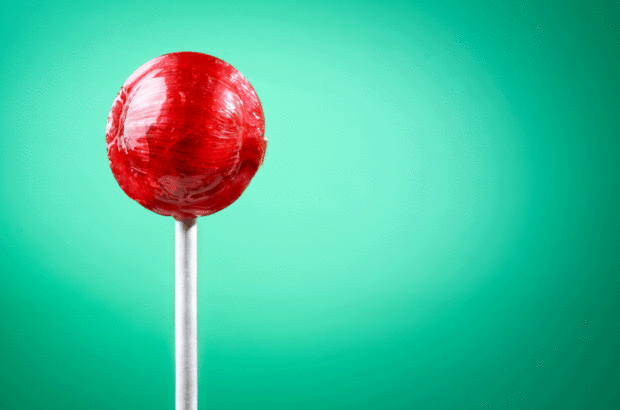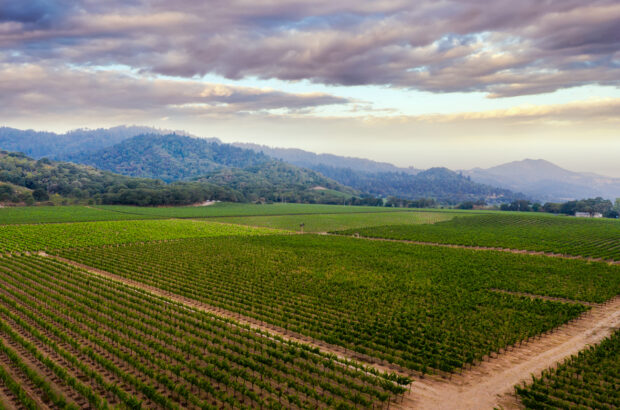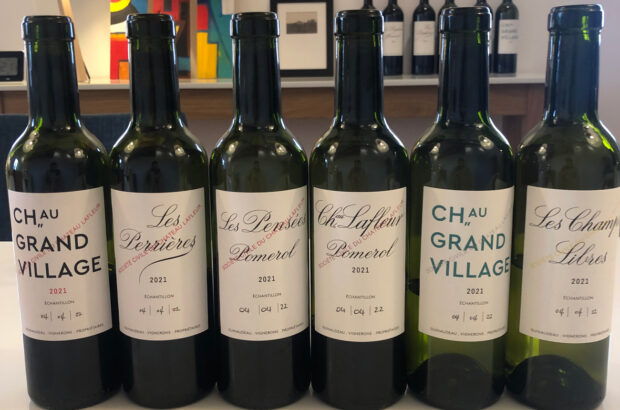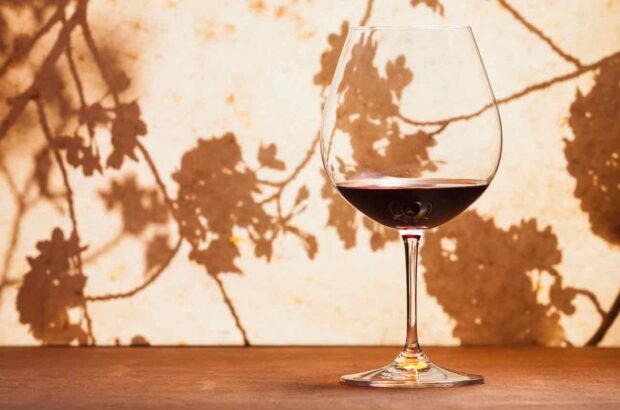How would you describe a Burgundy climat to a friend? Jane Anson provides a template and uses the example of a single appellation in the Côte Chalonnaise to argue that there is a particular ethos in the area that helped to secure UNESCO World Heritage status in July 2015.
Burgundy climats: the spirit of Montagny
The appellation of Montagny lies around the medieval town of Buxy on the Côte Chalonnaise. Although it was reportedly the favourite wine of the Cluny monks, and earned a nod in Hemingway’s A Moveable Feast, it has faced a pretty hardscrabble existence at times. Until the 1920s, the peasant farmers who worked the land here were more likely to plant aligoté and gamay than chardonnay or pinot noir, with the iconic Burgundy grapes growing in popularity only after the founding of the Buxy Cooperative Cellars in the 1930s (chardonnay in particular, as today this is a white wine only appellation). There are few truly stellar names making wine here, and no Grands Crus.
So it might be surprising to learn that in 1943, seven years after Montagny was named one of the very first appellations in the Burgundy region, it was given the rarified status of being 100% Premier Cru. It meant that every single producer of the commune was able to bottle his wine as Premier Cru, providing that the alcohol levels reached a minimum of 11.5%abv, but without the usual link to exposition and terroir that governs the typical Premier and Grand Cru system in Burgundy.
The reason for this anomaly was linked to German Occupation during the Second World War, but what makes Montagny even more interesting is that beween 1989 and 1991, when the winemakers were looking to extend the appellation, they voluntarily decided to reduce the number of Premiers Crus. Ceding to the spirit of the usual Burgundy quality system, they split their production into Premier Cru and Montagny Village wines, with the best sites set on the mid to high slopes. This means that today the 326 hectares of AOC Montagny have 201 hectares in Premier Cru set over 49 individual climats.
One of the most heartening stories in French viticultural history
This might just be one of the most heartening stories in French viticultural history, one of the rare occasions when winemakers chose cohesion of the quality message over marketing and earning potential (some might say that they could have shaved the number down even further, but let’s not quibble).
‘There were plenty of private and public spats over which vineyards kept their status,’ Dominique Lambry of the Burgundy Wine Bureau (BIVB) told me over a fascinating tasting of the Burgundy climats this week, ‘but the fact remains that the winemakers had seen over the proceeding decades that certain plots in Montagny made unquestionably better wines than others, and they couldn’t justify the whole commune being labeled as Premier Cru. So they did something about it’.It seems to me that this kind of story is why Burgundy, even with its spiraling prices, manages to keep the hearts and minds of the wine buying public. There are plenty of appellations that are currently lobbying for their best plots to be anointed Premier Cru (the national institute that governs these things receives hundreds of requests per year) but the feeling of authenticity remains. And it’s no doubt partly why the UNESCO World Heritage committee granted protected status to 1,247 climats of Burgundy on July 4th last year.
How to understand a Burgundy climat
‘A climat,’ said Lambry, ‘is effectively a micro-terroir with its own history and expression, and the word is only used in this way in Burgundy’. He might be right for now, but from Champagne to Pomerol others are starting to borrow it – making the BIVB’s slick and really rather brilliant presentation of the climats particularly timely.
You can read the report on how the climats were formed over several millennia here (http://www.climats-bourgogne.com/fichiers/Candidature_Climats_TOME1.pdf), but the take-home is that the sliced-up, spliced-up nature of Burgundy soils that makes the whole concept believable is due to the crashing together of the tectonic plates during the formation of the Alps, and the subsequent periods of glaciation and melting. The fractures that this left all over Chablis, the Côte d’Or and the Maconnais explains why there are just so many layers of different soil types and structures, and so many different expositions to the plots. It’s why if you ever choose to go cycling or jogging through Burgundy, you find yourself getting blasted alternately by cold air followed by warm pockets, in the same way that differing seabed levels makes the temperature of ocean swimming such a disconcerting experience.
The other key point that the presentation got across is that nature might have made 99% of the climats, but without the influence of man they would have never been singled out. And that the key figures to thank are not the monks or Dukes who we traditionally associate with the growth of Burgundy, even though the word first appeared in the 16th century in relation to Clos de Bèze. Instead we should look to the 19th century cartographers and geologists such as Jules Lavalle who spelt out the specifics and precision of the climat system, and the négociants who, crucially, agreed with the idea of ‘equivalence’ and so took it forward into general use. This is maybe the most unsung part – that without the owners and merchants agreeing that certain slopes gave wine equivalent in quality to others, and therefore could be accorded Grand Cru, Premier Cru or lesser status, the whole system would never had been so coherent – and at its heart, so simple. It’s why Montagny’s move in 1991 was so important, and is the key difference with the Bordeaux system, where different parts of the region developed their own ranking systems and we are left with Premier Grand Cru Classés As on the Right Bank being equivalent to Premiers Crus on the Left Bank.
But as ever with wine, the only way really get to grips with the climats is by pouring their fruit into a glass. So, two pairings from the same appellation, the same winemaker and the same vintage – just different climats…
The wines: A case study in Burgundy climats
Domaine Roux Pere et Fils Saint Aubin 1er Cru La Chatenière 2013
This is a large parcel of vines called la Chatenière named for chestnut trees that once grew here, unusually for a limestone slope. Sat at 300 to 350 metres in altitude, with a 25-30% gradient, this has a clear tang of lemon confit, with touches of almond and frangipane. Charming wine, for drinking young, it’s accessible although not simple.
Domaine Roux Pere et Fils Saint Aubin 1er Cru Les Cortons 2013
A smaller plot located just next to La Chatenière but a little higher on the slope. Both soils are mainly marl (basically a clay shot through with marine deposits), but they have very different expositions. Certainly this is different in style; more focused and lingers longer on the palate. Almost has a green edge, giving a sense of verticality. For botanists among you, Lambry likened this to the gentian plant often used to flavour bitters (not a plant that I know, although I have certainly tried Angostora bitter a few times, and this is the main ingredient). There is a smoky touch to the wine that should develop further on ageing, and on opening up the aromatics are beautiful. Clearly one to age.
Domaine Chanson Beaune 1er cru Clos des Fèves 2013
A monopole of Domaine Chanson, and one of the larger climats at 3.8 hectares, set on the mid slope with clay and limestone soils. This has been singled out as a place of particular quality since 1728. The oak is evident on the first nose, tightening the structure, but after several minutes in the glass the character of the wine itself becomes clear. Red fruits and sense of florality rise up on the finish with an attractive point of freshness. Would benefit from carafing. Complex but subtle.
Domaine Chanson Beaune 1er cru Clos des Marconnets 2013
Similar altitude but with northern exposure and a touch more limestone. Domaine Chanson owns around 40% of this vineyard, and gives both around three weeks maceration with very little punching down of the skins. Very different aromatically from the first wine of the pairing, still structured, but this time a touch of bitterness on final. I should qualify that by saying I mean bitter in the sense of coffee and a touch of tarry smoke. The tannins are clearer here than in the first, against needs oxygen and ageing, quite backwards right now but with great potential.
More Jane Anson columns:

Anson on Thursday: Inside the ‘world’s greatest wine library’
Lawyers, rockstar winemakers and seminal papers are all here...
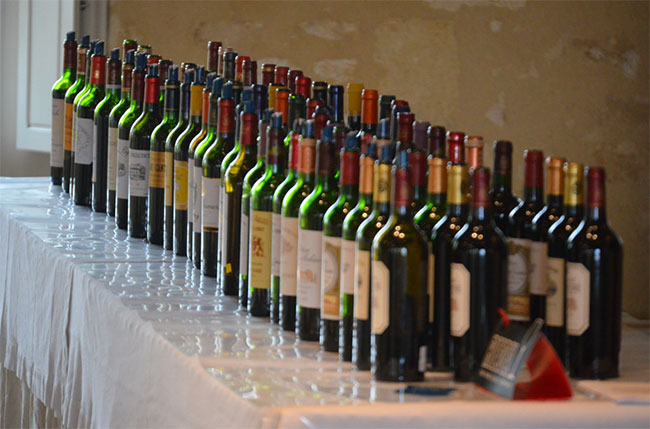
Jane Anson: The seven key aromas of aged Bordeaux
Look out for these seven key aromas when tasting Bordeaux...

Anson on Thursday: Pesticides and the rise of the resistants
Can disease resistant grape varieties help to cut pesticide reliance?

Anson on Thursday: Vandalism, fraud and a rare Bordeaux wine
Was a €3000 Graves wine from historic vines always too good to be true? Jane Anson scratches beneath the surface



